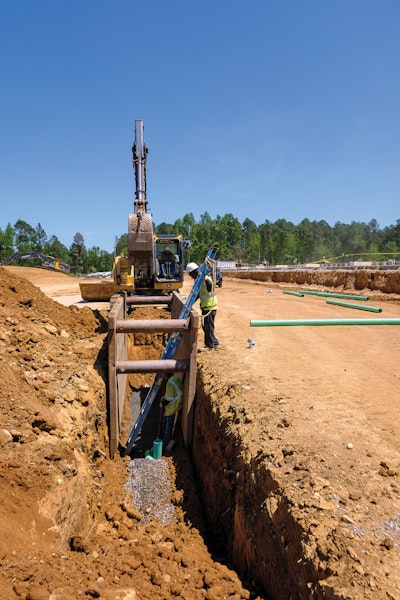
A crew member operates a Kobelco excavator as workers build trench lines for an onsite project in a state park.
Email Stamie E. Lyttle Co. (SELCO) or call the office in Richmond, Virginia, and both are answered promptly — by people.
“My parents believed that the personal touch was a keystone of providing quality service,” says Coleman Lyttle Sr., SELCO’s 66-year-old owner. “Those...









